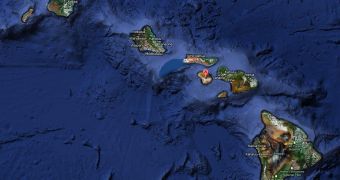Larry Ellison has just bought Hawaii. Well, technically, that's not entirely true. He hasn't "just" bought it, he bought it in April. Granted, he bought only one island (for now?), but this is no small rock on the ocean, it's the sixth largest in the archipelago, Lanai or Lana'i.
He is said to have paid some $500 to $600 million (€394 to €472 million) for the island. It's unclear whether he decided to buy it as a consolation prize, since he lost the lawsuit against Google.
It's hard to say what is surprising and what isn't in all of this. On the one hand, when you have as much money as Larry Ellison, the third richest man in the US, with an estimated worth of $36 billion/€28.4 billion, it's hard to imagine something you couldn't buy.
On the other hand, you'd think that an 141 square mile (365 km2) island in Hawaii, not some unknown rock somewhere in the third world, would not be for sale no matter how much money you have.
Well, it turns out you'd be wrong. Ellison is poised to complete the acquisition of some 98 percent of the island. The rest two percent is owned by the state and the island’s some 3,100 residents. Because yes, this is no desert island, there's a full city, a small one granted, in the middle of it. There's even an airport.
But the rest is all Ellison's. This means much of the island, several luxury resorts, a couple of golf courses and several mansions. The only snag Ellison has to get through is the approval on buying several utility companies that were also owned by the seller.
The seller being Castle & Cooke, a fruit company that turned to real estate after agriculture started to dwindle. The history of the island is quite interesting. It's linked to the history of Castle & Cooke, which goes back a century and a half.
It started out as a fruit company, running plantations in Hawaii. It eventually owned a huge chunk of Lanai and used it to grow pineapples for the Dole Food Company, which it had acquired. This went on until very recently. The island only started being used as a tourism destination in the last decade of the 20th century.

 14 DAY TRIAL //
14 DAY TRIAL //